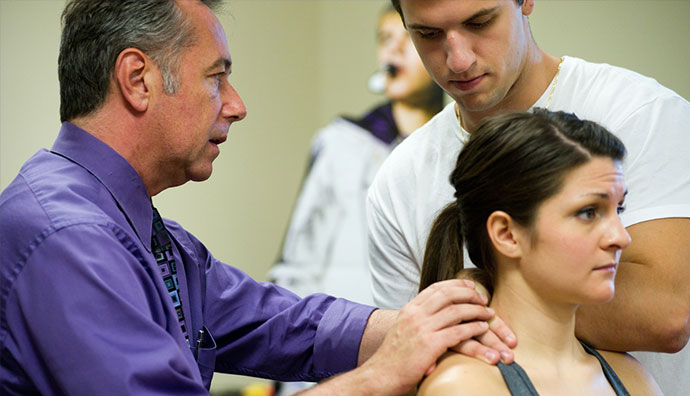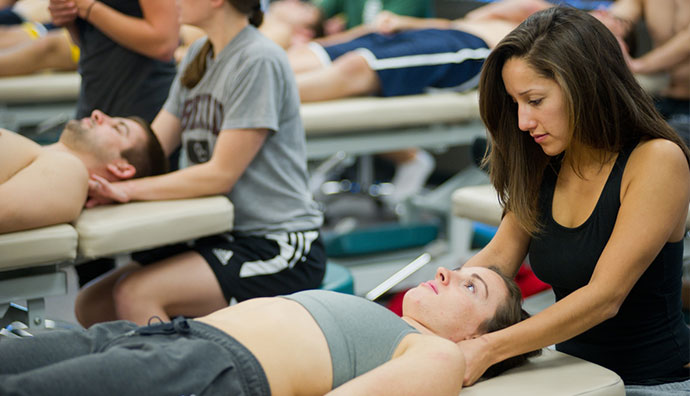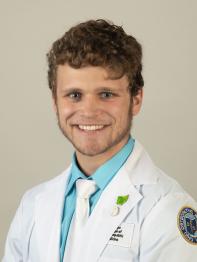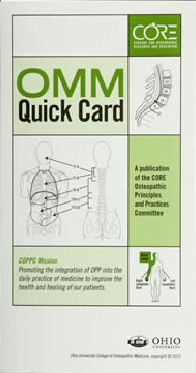Our Programs
Osteopathic Manipulative Medicine
Student Experience
The goal of osteopathic manipulative medicine in the curriculum is to develop in students the necessary knowledge, skills and values essential in addressing musculoskeletal problems and systemic dysfunction through osteopathic manipulative treatments. Our training emphasis ensures that students become strong members of the medical profession who can best serve their patients, their clinical settings and their communities.
OMM Curriculum
The Ohio University Heritage College of Osteopathic Medicine Predoctoral Curriculum: Years I and II
GOAL: COMPETENCY
Led by a knowledgeable and experienced group of faculty members who are licensed D.O.s, the students in this program will participate in weekly OMM labs and receive biweekly lectures. The first year focuses on models of treatment. The second year emphasizes clinical applications and integration through case studies. Students will be evaluated on academic, cognitive and practical learning.
First- and second-year students practice hands-on training with their peers, and twice a semester, each lab brings in real patients from instructors' practices, faculty and staff. These real patients are evaluated and treated by students under supervision of the instructor.
The Ohio University Heritage College of Osteopathic Medicine has a state-of-the-art OMM lab, equipped with a five-camera video monitor. Presentations are recorded and allow students to review the videos on the web. There are also six large screens that display faculty PowerPoint presentations and real-time osteopathic manipulations in the lab.
The Ohio University Heritage College of Osteopathic Medicine Predoctoral Curriculum: Years III and IV
GOAL: INTEGRATION
With the necessary experience and training of osteopathic knowledge gained during the first two years, students in years three and four will progress to patient management.
The OMM curriculum provides consistency in content, clinical training and skills assessment. This curriculum addresses the various clinical venues such as hospitals, clinics and private physician practices where students will see patients within the Centers for Osteopathic Research and Education. This program is applied over a two-year period, beginning at the start of the third academic year and ending at the close of the fourth year.
The uniformity of its design enables all medical students to experience the same instruction and review the same clinical applications of OMM at every CORE hospital. For instance, the topics during the month of November will be uniform at each CORE hospital throughout Ohio. Subsequent topics will be covered sequentially throughout the state.
Osteopathic Graduate Medical Education
GOAL: SYNTHESIS
During residency, postdoctoral candidates learn to confidently synthesize and apply osteopathic training to pathophysiology in the diagnosis and management of somatic dysfunction relevant to their specialty.
For more information about the OMM department and our role in osteopathic graduate medical education, please see our Graduate Training Programs page.
OMM Honors Tutorial
The Osteopathic Manipulative Medicine Department Honors Tutorial is an opportunity for second-year students to advance their skills and understanding of OMM for course credit. This program also gives students an opportunity to develop teaching skills as they help tutor and mentor first-year students.
Second-year Ohio University Heritage College of Osteopathic Medicine students in good standing with an interest in learning/teaching OMM skills at a higher level will be considered for this program. The Honors Tutorial provides second-year students with a two-credit honors course. The course title is OMM Honors 1, 2 & 3.
Up to 50 students are accepted each year for the OMM Honors Program. OMM faculty members select students based upon assessment of each student’s application, which includes a personal statement of interest, why that student feels he/she would like to be a part of this program and the value the student brings to the program in terms of skills and prior activities that have prepared them for the course. We make every attempt to accept all qualified students who apply.
Course Description
Faculty Development
Faculty development sessions help honors students with their teaching skills. Topics may include constructive feedback, leadership training, question asking and presentation basics.
A presentation on article analysis is held during the fall term. Lunch is provided during these sessions.
Lab Preparation
A weekly instructional hour prepares Honors Tutorial students for teaching first-year students as table trainers in the OMM lab. This constitutes the lecture portion of the course.
Lab Assistance
During each two-hour lab session, Honors Tutorial students supervise the progress and facilitate the understanding of four first-year students. The faculty leading the lab are on hand as facilitators for Honors Tutorial and first-year students. This allows the honors students to deepen their understanding and refine their palpatory skills following the adage, "See one, do one, teach one."
Journal Club
Twice each semester, a Journal Club is held to review articles relevant to osteopathic philosophy, principles and practice. Honors Tutorial students evaluate articles and exchange ideas with OMM faculty, fellows and postgraduate residents.
Advanced OMM Skills
Each term, two, two-hour lab sessions are convened for honors students, highlighting diagnostic and therapeutic skills beyond those taught in the courses in the first two years. Honors Tutorial students are supervised as they practice those skills.
Evaluation
Honors Tutorial student portfolios are evaluated each semester. The portfolio contains five sections:
- Weekly Lecture
- Weekly Lab
- Journal Club
- Advanced Lab Session
- Faculty Development
Two or three directed questions guide Honors Tutorial journal activities focused on the interest identified by individual students. Journal entries should be one page long for each of the two areas of focus per semester. Students are graded based upon the content of the essays. The overall grade each semester is Pass/Fail. Student transcripts include entries for their participation in Honors Tutorial courses per semester.
Predoctoral Associateship
Each year, three fourth-year medical students are selected for an extra year of training as predoctoral associates in osteopathic manipulative medicine. This fellowship further develops OMM skills and has prepared past participants for careers as OMM specialists for academic medicine. OMM associates receive fee waivers, tuition waivers and a stipend for their efforts.
OMM predoctoral associates present in the OMM lab and lecture hall, teaching students side-by-side with OMM faculty members. Administratively, OMM associates provide invaluable assistance to the OMM faculty by assisting in the development of the curriculum for medical students. OMM associates facilitate exams, as well as coordinate test-writing and develop practical exams. They also tutor first- and second-year students in OMM.
OMM clinical skills are further honed in the Associate’s Clinic, as they act as independent practitioners to the Ohio University Heritage College of Osteopathic Medicine faculty and staff. OMM associates receive special training through skills development and faculty development sessions.
To Schedule a Meeting/Tutoring with any of the PCA's: Booking Link
Athens Osteopathic Primary Care Associates
Dublin Osteopathic Primary Care Associates
Cleveland Osteopathic Primary Care Associates
OMM Quick Card
Pocket reference guide promotes osteopathic manipulative medicine fundamentals
Your osteopathic medical students and residents can have something new in their pockets during clinical rotations: OMM Quick Cards.
This pocket-sized, fold-out reference guide is designed “to facilitate the integration of the AOA core competencies into the practice of medicine, improving the health and healing of patients,” according to COPPC members.
The cards are an easy-to-use, handy guide.
The OMM Quick Card is a reference tool. It is a reminder to students and residents of the osteopathic principles that are important to think about on a day-to-day basis.
“My hope is that these cards become a helpful reminder for all students, residents, trainers and practicing physicians to use OMM frequently when they are treating their patients. It can serve as a refresher for OMM skills that need a little dusting off and a resource to think about using OMM on patients that they may not have considered in the past.”
- Stevan Walkowski, D.O., Ohio University Heritage College of Osteopathic Medicine, Chair, Department of Osteopathic Manipulative Medicine
To order an OMM Quick Card, please contact:
osteopathic.integration@ohio.edu



